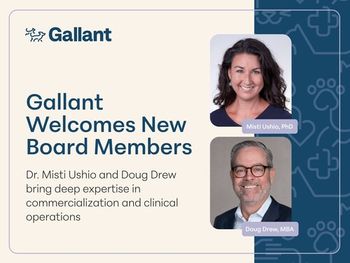
Constantly changing
Welcome back, intrepid readers.
Welcome back, intrepid readers.
You may (or not) recall that last month we looked at a practice that had lost one of the four veterinarians to illness. She became ill just thinking about going to work and left!
Now the owner and two associates were trying to fill her high heels by taking up the extra cases and working harder and longer. Relief came in the form of a recession and a 15 percent drop in caseload easing them down to 20 clients each on an average day.
Of course, we know full well, that the "average" day has never existed in our practices; practices are well noted for either coma or chaos.
The practice kept its full complement of staff without regard for the missing in action associate and paraprofessional staff costs were an unreasonable 24 percent. But, everyone managed to look busy at important times like when the owner was near, so no plans to reduce staff were considered and the $78,000 in overstaffing costs came neatly right out of the owner's compensation. That's when he finally realized that the ship was sinking and he needed a salvage specialist before her accumulated savings from prior years were exhausted.
After listening to his mournful lament, we got some specific numbers from him and promised to get back to him in a day or so.
In motion
He told us that his gross for the last two years was unchanged at $1.3 million. They saw 18,000 transactions last year and the average hospital transaction, including boarding and OTC sales, was $72.22. Their office visit was $35. This set off an immediate alarm in our minds as either the ATF was 30 percent too low for that office visit fee or the office visit fee was too high for the area. A healthy whole hospital ATF = 3.0 x Office Visit (O.V.)
Their doctor transaction average was $106.80. That figure was obtained from only those transactions that were actually seen by a doctor.
We knew something was wrong immediately because the hospital ATF should have been $105 (3X O.V.) and the doctor ATF should have been $150-$170(4.3-4.5x O.V.).
Then we checked the demographics for their practice area. There was a projected growth in their immediate area of 11 percent (that's really good!) over the next five years and an average family income of $65,500. This means that the average transaction for their immediate area should be at least $104.80 and the office visit $34.90. Plugging in the demographics to our client perception of value fee schedule detailed what that area called for in affordable fees that we then compared to what was currently being charged.
Just these seven procedures added $13,124/month or $157,488 to their gross production with no appreciable increase in the number of fee complaints. Why? Because these fees were based on adaptation to the demographics of the people residing in a five mile radius of the hospital.
Numbers add up
Note that this was based on the average family income and I can state with no trepidation that 50 percent of the people in that area had above average family incomes.
Applying the demographics to all of the services provided by this hospital actually brought in $405,000 additional monies. The staff costs dropped from 24 percent of 1.3 million to 18.3 percent of 1.7 million.
This was done with no appreciable loss of good clients. Yes, a half dozen or so of the worst clients had their pet's records transferred to another hospital. All the receptionists stood up and applauded!
Remember that the office visit is not what pays the bills.
Remember the engine
The average transaction fee is the engine that moves the practice and keeps it running profitably.
Your ATF should be no less than 1.6 times the average family income in the immediate (three miles for suburbia, 10 miles for rural practices) Cat specialty practice should be no less than 1.8 times the average family income in the area.
Beware! Average family income cannot be applied to this formula if you are using a whole zip code for your demographics. That's just too big an area and will get you into trouble. There are more and less affluent pockets in any area. Just a shift in the circle enclosing 80 percent of your clients by half a mile in any direction could change your demographically correct fees by 20 percent or more!
If you are facing shortfalls in your gross earnings, your first step is to ensure that you are not undercharging. You should have determined the demographic criteria before opening the practice, but it is never too late!
Transactions are declining 5-15 percent in most of the non-growth areas of our country and only maintaining an optimum ATF will make up the loss. Your slice of the pizza may be slimmer, but the number of toppings is entirely up to where you practice and what services you offer.
Bon Appetito!
Newsletter
From exam room tips to practice management insights, get trusted veterinary news delivered straight to your inbox—subscribe to dvm360.






